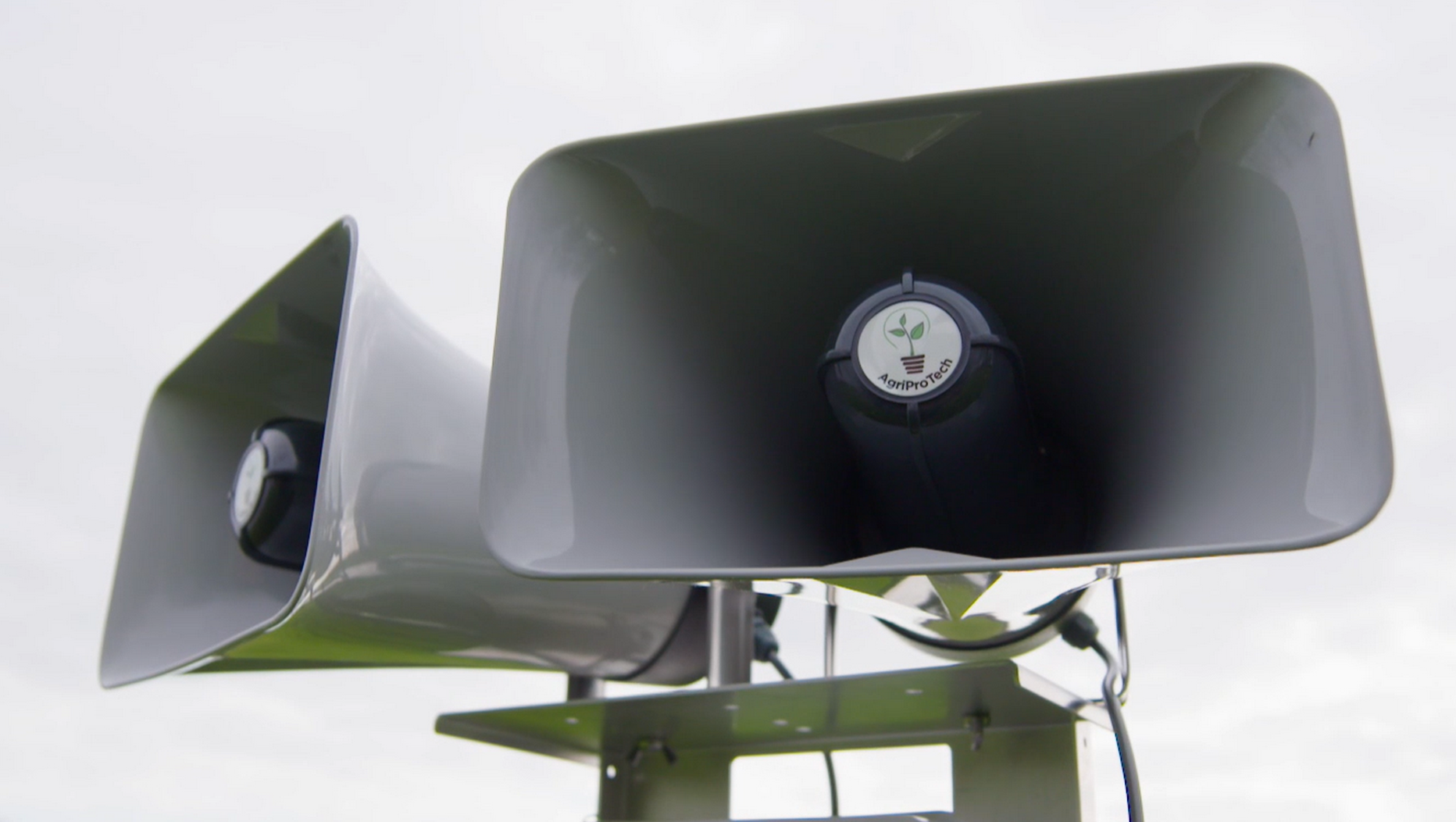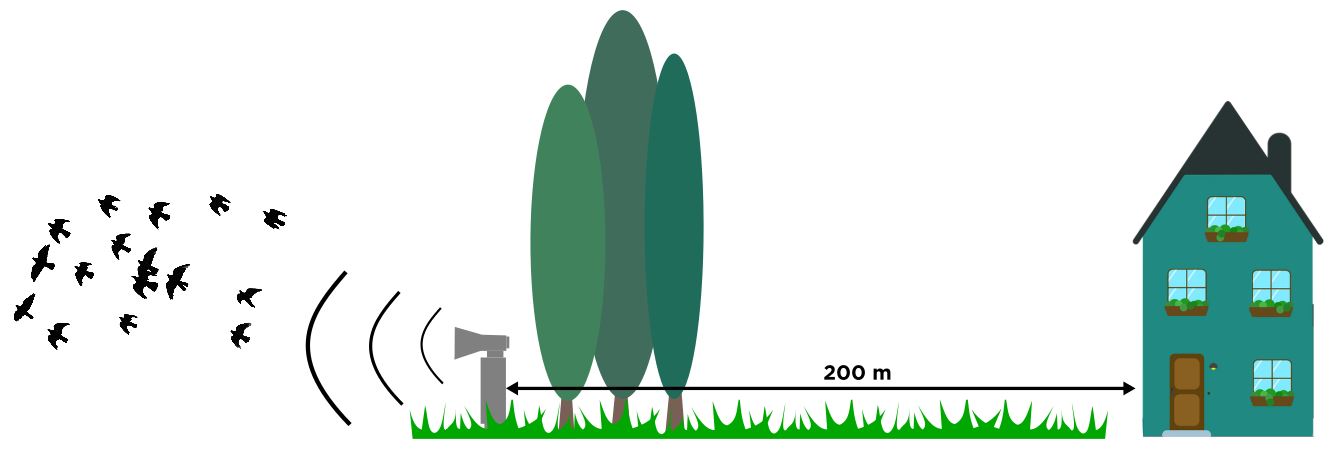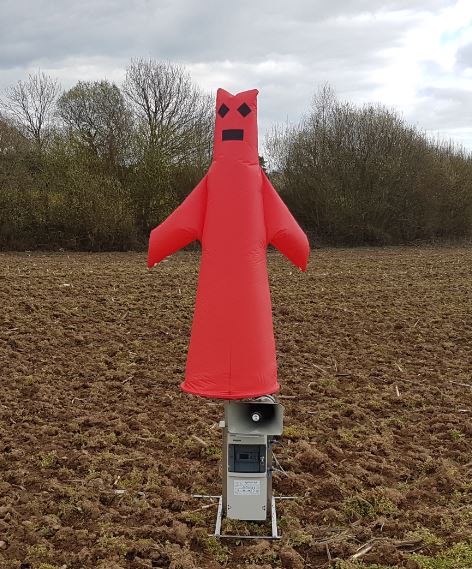
Are the fields you want to protect against bird damage close to certain houses? In order to be able to use a bird repeller without getting into trouble with your neighbours, here are some tips ...
SUMMARY :
1 - Respect a minimum distance
2 - Use natural or artificial barriers
3 -Create a barrier yourself
4 - Program your bird repeller correctly
5 - Warn people in the neighbourhood
6 - Use silent methods
7 - What does the law say?
1 - Respect a minimum distance
It is necessary to leave at least 200 metres between the bird scaring devices, which emit at maximum power (~120 dBA @ 1 meter), and inhabited areas (this is the distance retained by certain local authorities).
It is also interesting to place the device taking into account the prevailing winds so that they carry the sound towards the areas to be protected and not towards the houses.
2 - Use natural or artificial barriers
Position your acoustic repeller so that it uses everything that can stop the sound from passing between your parcels and the houses:
- hedges,
- rows of trees,
- wooded areas,
- enbankments,
- fences
3 - Create a barrier yourself
If your field does not have natural barriers, it is possible to create one from scratch.
Some bird scarer users stack bales of hay in such a way as to prevent the scare signals from going in the direction of houses.
4 - Program your bird repeller correctly
When using the AviTrac® bird scare devices, we recommend that you program the scare signals to be emitted every 20 minutes at the most, in order to reduce the habituation of the birds to the scare signals. In some cases, 1 transmission every 40 minutes is sufficient.
This is common sense, but you should not program a broadcast between 8 pm and 7 am. This would be of little use anyway, as the birds that cause crop damage are diurnal and do not feed at night.
5 - Warn people in the neighbourhood
The sowing period during which most users use a bird repeller is limited in time. In most cases, it is not necessary to use a protective device for more than 3 or 4 weeks.
In addition, the use of acoustic solutions can also limit or even replace the use of phytosanitary products.
Your neighbours may be more tolerant if you give them this information before the season: the inconvenience will be short-lived and it limits the use of chemicals.
6 - Use silent methods
In some situations, it is simply not possible to use sound scaring: in cities, for small areas surrounded by houses, etc.
In these cases, silent solutions must be used, for example:
- Kite scarecrows
- AviTrac with ManTrac option programmed with low noise level
Do you have other ideas? Share them in the comments!










